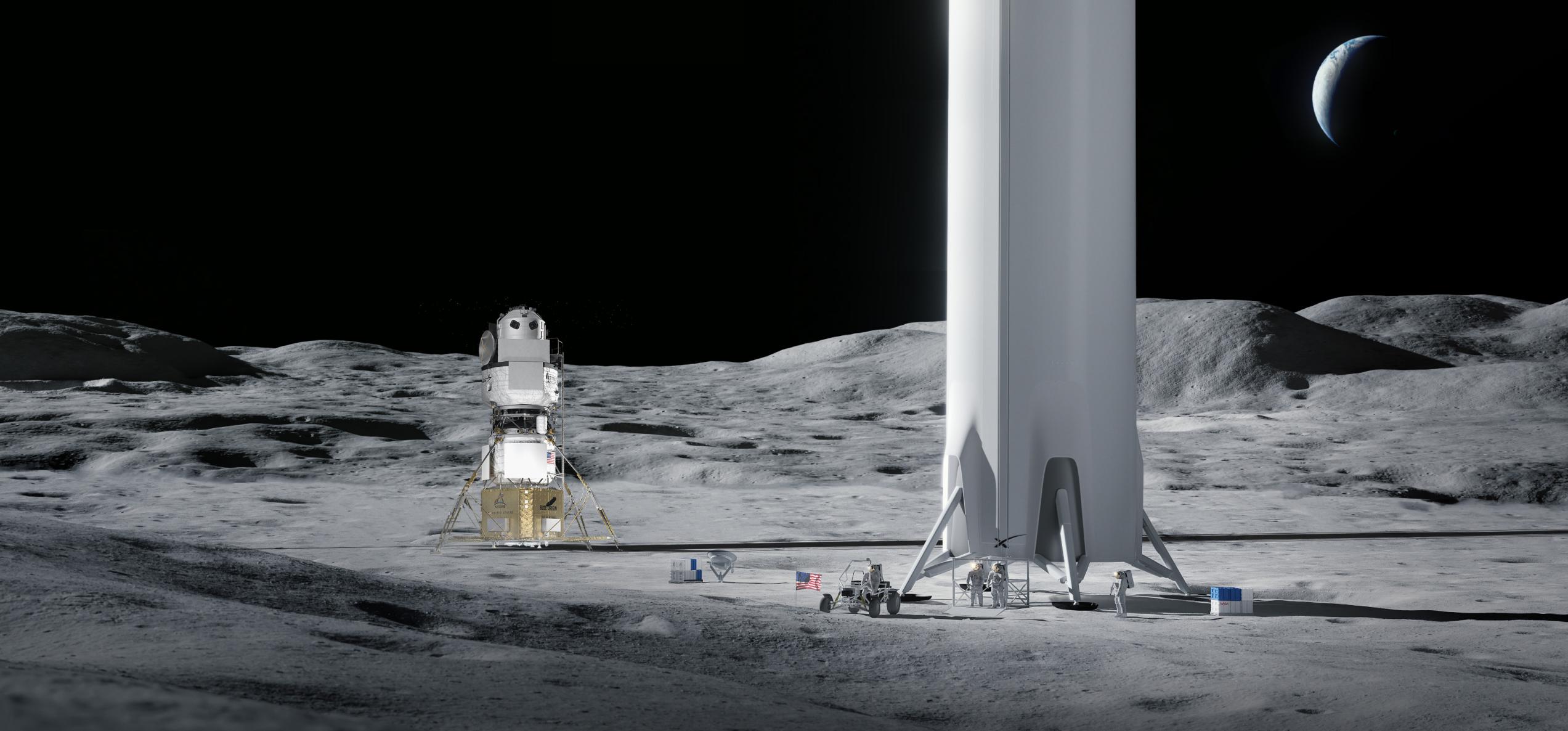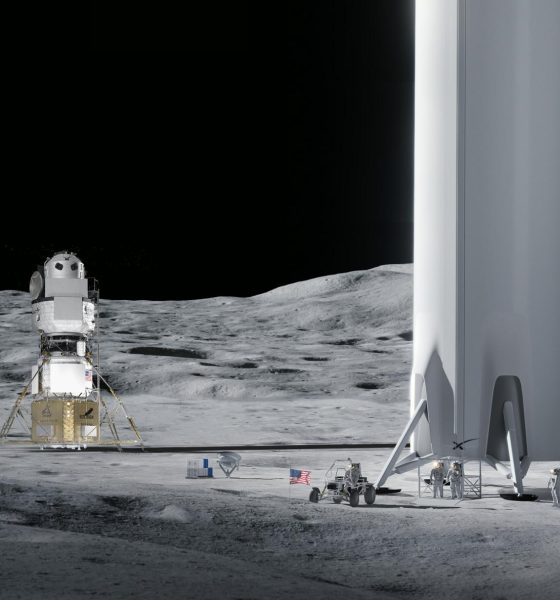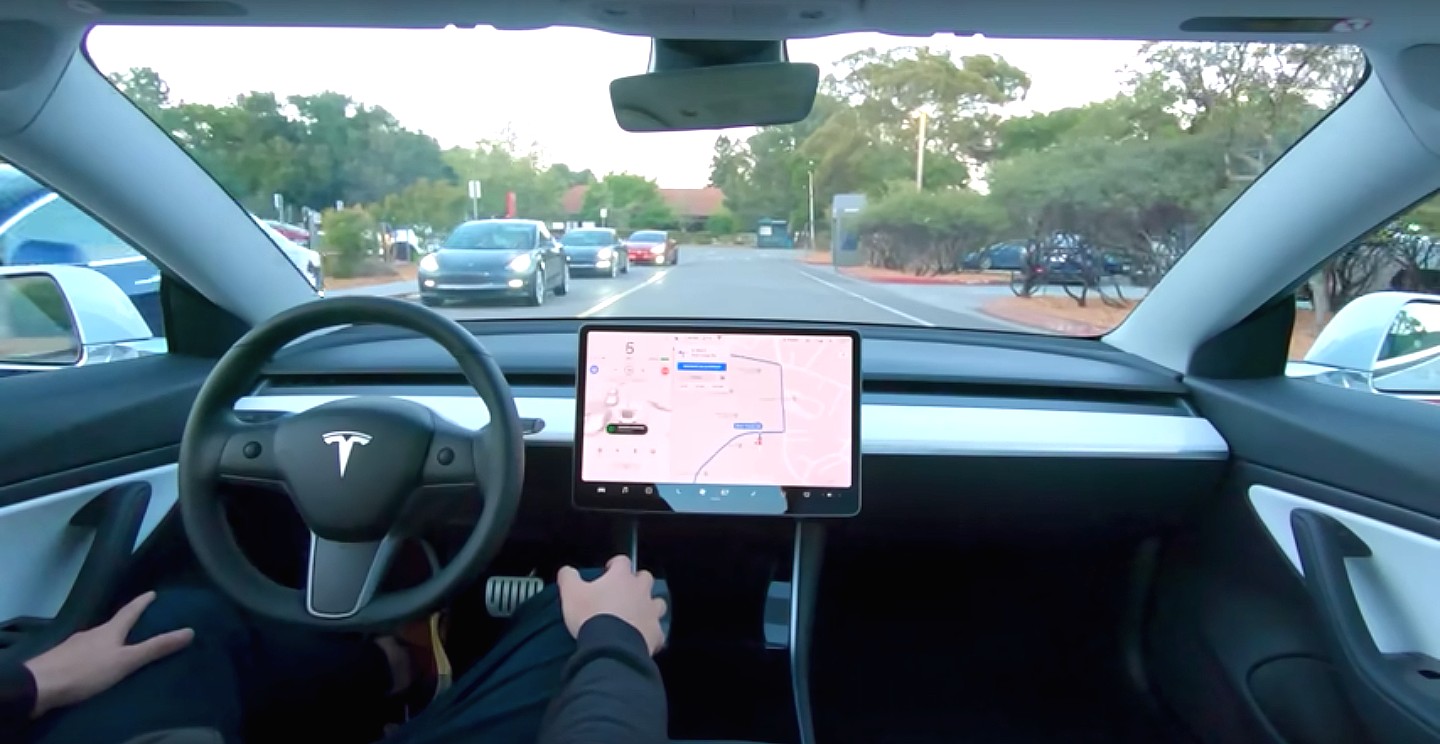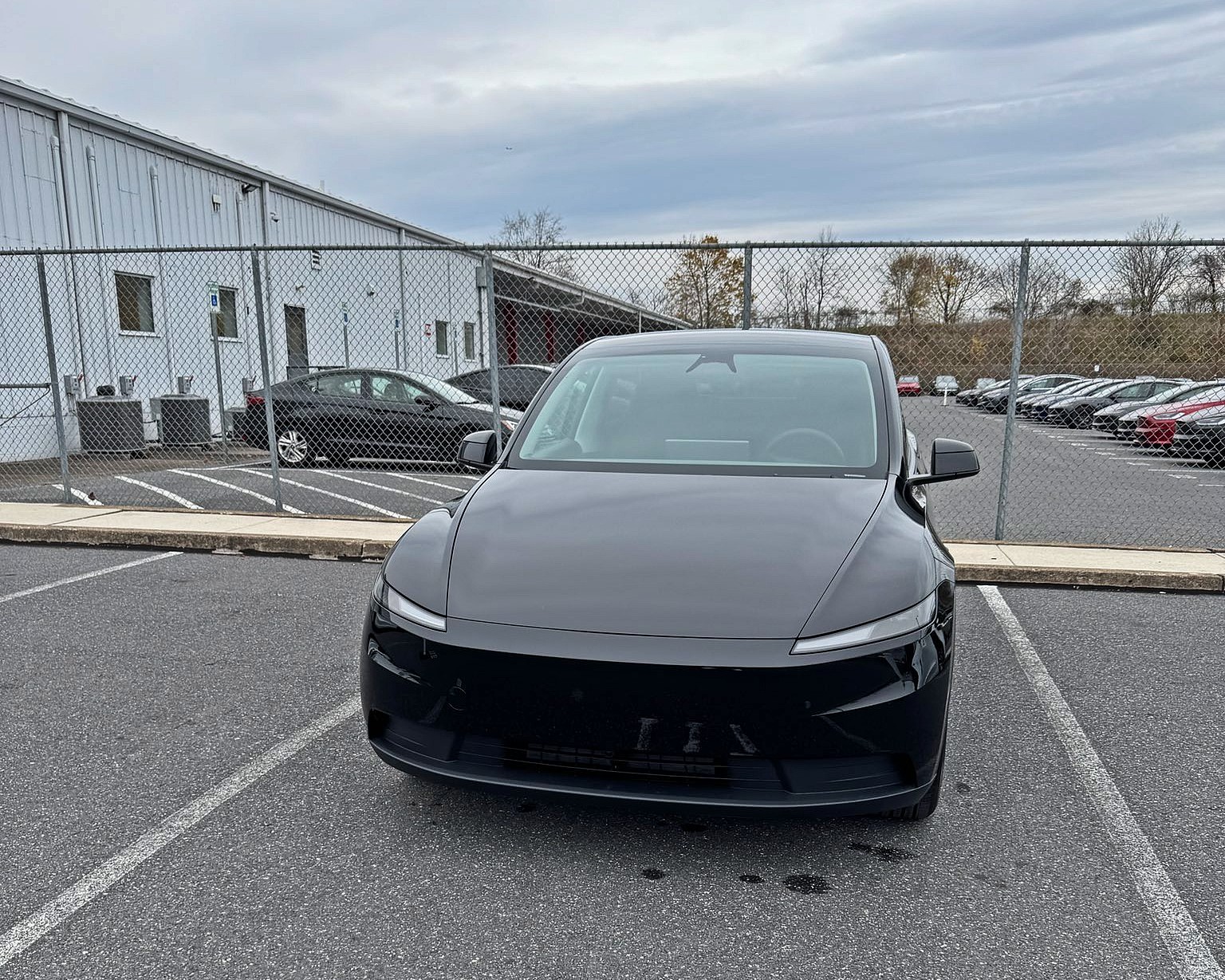

News
SpaceX CEO Elon Musk explains why Blue Origin’s Starship lawsuit makes no sense
For the first time since SpaceX competitor Blue Origin took NASA to federal court after losing a Moon lander contract to Starship and a protest over that loss, unsealed documents have finally revealed the argument Jeff Bezos’ space startup is focusing on in court.
After the details broke in new court documents filed on Wednesday, SpaceX CEO Elon Musk weighed in on Twitter to offer his take on why the arguments Blue Origin has hinged its lawsuit on make very little sense.
While one seemingly significant portion of the main complaint claiming to reveal “additional substantial errors” in SpaceX’s Starship HLS proposal was almost fully redacted, most of the opening argument is legible. In short, Blue Origin appears to have abandoned the vast majority of arguments it threw about prior to suing NASA and the US government and is now almost exclusively hinging its case on the claim that SpaceX violated NASA’s procurement process by failing to account for a specific kind of prelaunch review before every HLS-related Starship launch.
For NASA’s HLS competition, SpaceX proposed to create a custom variant of Starship capable of serving as a single-stage-to-orbit crewed Moon lander with the help of the rest of the Starship fleet – including Super Heavy boosters, cargo/tanker Starships, and a depot or storage ship. SpaceX would begin a Moon landing campaign by launching a (likely heavily modified) depot Starship into a stable Earth orbit. Anywhere from 8 to 14 Starship tanker missions – each carrying around 100-150 tons of propellant – would then gradually fill that depot ship over the course of no more than six or so months. Once filled, an HLS lander would launch to orbit, refill its tanks from the depot ship, and make its way to an eccentric lunar orbit to rendezvous with NASA’s Orion spacecraft and three Artemis astronauts.
As Blue Origin has exhaustively reminded anyone within earshot for the last five months, SpaceX’s Starship Moon lander proposal is extremely complex and NASA is taking an undeniable risk (of delays, not for astronauts) by choosing SpaceX. Nevertheless, NASA’s Kathy Lueders and a source evaluation panel made it abundantly clear in public selection statement that SpaceX’s proposal was by far the most competent, offering far a far superior management approach and technical risk no worse than Blue Origin’s far smaller, drastically less capable lander.
The bulk of Blue Origin’s argument appears to be that its National Team Lander proposal was drastically disadvantaged by the fact that SpaceX may or may not have incorrectly planned for just three ‘flight readiness reviews’ (FRRs) for each 16-launch HLS Starship mission. While heavily redacted, Blue Origin wants a judge to believe that contrary to the US Government Accountability Office’s (GAO) fair assessment that such a small issue is incredibly unlikely to have changed the competition’s outcome, it would have “been able to propose a substantially lower price” for its lander. To be clear, a flight readiness review is an admittedly important part of NASA’s safety culture, but it ultimately amounts to paperwork and doublechecks over the course of a day or two of meetings.
All else equal, the need to complete an FRR before a launch is incredibly unlikely to cause more than a few days of delays in a worst-case scenario and would have next to no cost impact. There is no reasonable way to argue that being allowed to complete some launches without an FRR would have singlehandedly allowed Blue Origin to “[engineer] and [propose] an entirely different architecture.” Nevertheless, that’s exactly what the company attempts to argue – that it would have radically and completely changed the design it spent more than half a billion dollars sketching out if it had only been able to skip a few reviews.
Curiously, Blue Origin nevertheless does make a few coherent and seemingly fact-based arguments in the document. Perhaps most notably, it claims that when NASA ultimately concluded that it didn’t have funds for even a single award (a known fact) and asked SpaceX – its first choice – to make slight contract modifications to make the financial side of things work, NASA consciously chose to waive the need for an FRR before every HLS Starship launch. Only via purported cost savings from those waived reviews, Blue Origin claims, was NASA able to afford SpaceX’s proposal – which, it’s worth noting, was more than twice as cheap as the next cheapest option (Blue Origin).
Ultimately, it thus appears that Blue Origin may have a case to make that NASA awarded SpaceX the HLS Option A contract despite a handful of errors that violated contracting rules and the HLS solicitation. Relative to just about any other possible issue, though, it’s hard not to perceive the problems Blue Origin may or may have correctly pointed out as anything more than marginal and extraordinarily unlikely to have changed the outcome in Blue’s favor had they been rectified before the award. Most importantly, even if Blue Origin’s argument is somehow received favorably and a judge orders NASA to overturn its SpaceX HLS award and reconsider all three proposals, it’s virtually inconceivable that even that best-case outcome would result in Blue Origin receiving a contract of any kind.

News
Tesla launches crazy Full Self-Driving free trial: here’s how you can get it

Tesla is launching a crazy Full Self-Driving free trial, which will enable owners who have not purchased the suite outright to try it for 30 days.
There are a handful of stipulations that will be needed in order for you to qualify for the free trial, which was announced on Thursday night.
Tesla said the trial is for v14, the company’s latest version of the Full Self-Driving suite, and will be available to new and existing Model S, Model 3, Model X, Model Y, and Cybertruck owners, who will have the opportunity to try the latest features, including Speed Profiles, Arrival Options, and other new upgrades.
🚨 Tesla is launching a free 30-day trial of Full Self-Driving in North America for owners.
It includes every model, but you need v14.2 or later, and you cannot have already purchased the suite outright. https://t.co/8CNmxxOkVl
— TESLARATI (@Teslarati) November 27, 2025
You must own one of the five Tesla models, have Full Self-Driving v14.2 or later, and have an eligible vehicle in the United States, Puerto Rico, Mexico, or Canada.
The company said it is a non-transferable trial, which is not redeemable for cash. Tesla is reaching out to owners via email to give them the opportunity to enable the Full Self-Driving trial.
Those who are subscribed to the monthly Full Self-Driving program are eligible, so they will essentially get a free month of the suite.
Once it is installed, the trial will begin, and the 30-day countdown will begin.
Tesla is making a major push to increase its Full Self-Driving take rate, as it revealed that about 12 percent of owners are users of the program during its recent earnings call.
Tesla CFO Vaibhav Taneja said during the call:
“We feel that as people experience the supervised FSD at scale, demand for our vehicles, like Elon said, would increase significantly. On the FSD adoption front, we’ve continued to see decent progress. However, note that the total paid FSD customer base is still small, around 12% of our current fleet.”
Earlier today, we reported on Tesla also launching a small-scale advertising campaign on X for the Full Self-Driving suite, hoping to increase adoption.
Tesla Full Self-Driving warrants huge switch-up on essential company strategy
It appears most people are pretty content with the subscription program. It costs just $99 a month, in comparison to the $8,000 fee it is for the outright purchase.
News
Tesla Full Self-Driving warrants huge switch-up on essential company strategy

Tesla Full Self-Driving has warranted a huge switch-up on an essential company strategy as the automaker is hoping to increase the take rate of the ADAS suite.
Unlike other automotive companies, Tesla has long been an outlier, as it has famously ditched a traditional advertising strategy in favor of organic buzz, natural word-of-mouth through its production innovation, and utilizing CEO Elon Musk’s huge social media presence to push its products.
Tesla has taken the money that it would normally spend on advertising and utilized it for R&D purposes. For a long time, it yielded great results, and ironically, Tesla saw benefits from other EV makers running ads.
Tesla counters jab at lack of advertising with perfect response
However, in recent years, Tesla has decided to adjust this strategy, showing a need to expand beyond its core enthusiast base, which is large, but does not span over millions and millions as it would need to fend off global EV competitors, which have become more well-rounded and a better threat to the company.
In 2024 and 2025, Tesla started utilizing ads to spread knowledge about its products. This is continuing, as Full Self-Driving ads are now being spotted on social media platforms, most notably, X, which is owned by Musk:
NEWS: Tesla is running paid advertisements on X about FSD (Supervised). Here’s an ad they started running yesterday: pic.twitter.com/IHVywLMyTd
— Sawyer Merritt (@SawyerMerritt) November 25, 2025
Interestingly, Tesla’s strategy on FSD advertising is present in Musk’s new compensation package, as the eleventh tranche describes a goal of achieving 10 million active paid FSD subscriptions.
Full Self-Driving is truly Tesla’s primary focus moving forward, although it could be argued that it also has a special type of dedication toward its Optimus robot project. However, FSD will ultimately become the basis for the Robotaxi, which will enable autonomous ride-sharing across the globe as it is permitted in more locations.
Tesla has been adjusting its advertising strategy over the past couple of years, and it seems it is focused on more ways to spread awareness about its products. It will be interesting to see if the company will expand its spending even further, as it has yet to put on a commercial during live television.
We wouldn’t put it out of the question, at least not yet.
News
Tesla Model Y Standard: first impressions from a Premium owner

Tesla was nice enough to hook us up with the new Model Y “Standard” trim for a few days, and while we’ll be sure to fill you in on the full experience in the coming days, there are a lot of differences we noticed right off the bat, which make the ownership experience different from the “Premium” configuration level.
I purchased a Model Y Long Range All-Wheel-Drive back in August and took delivery just two weeks later. Through the first three months of owning my car, I’ve come to love so many things about the Tesla experience.
I traded my ICE vehicle for a Tesla Model Y: here’s how it went
However, I was interested in experiencing the affordable trim and seeing whether I would miss any of the voided features of the “Premium” Model Y.
Through the first 24 hours, here are my first impressions of the Model Y Standard as a Premium trim level owner:
Overall Aesthetic
The lack of a light bar is not something that is a dealbreaker. In fact, I would argue that the Model Y Standard’s more traditional headlight design is just as pleasing from an aesthetic standpoint.
The car is great looking from top to bottom; there are not a substantial number of differences besides the lack of a lightbar on both the front and the back of the car.
Overall, it is a very sleek vehicle, but the major changes are obviously with the interior.
Interior Changes
This is where the big differences are, and some of the things I’ve gotten used to in the Premium are not included. If I didn’t have a Premium Model Y already, I’m not sure I’d miss some of the things that are not present in the Standard trim, but I believe I’d get annoyed with it.
First impressions:
✅ Interior is excellent. I definitely miss the additional storage already that is available in my Premium. I could definitely get over it though
✅ Noticeable step down in sound system. Long Time by Boston absolutely cranks in the Premium; it’s still very… https://t.co/JNWvxTd8p1
— TESLARATI (@Teslarati) November 25, 2025
Storage
The Premium has a large storage compartment between the cupholders and the wireless charger, which is not present in the Standard trim. Instead, it is more like the Cybertruck, as there is a pass-through and floor storage.
I think that the pass-through is nice, but the additional storage is something I take advantage of, especially as someone who films Full Self-Driving videos, which requires hauling mounts, GoPros, and other accessories.
The sleekness of the Premium trim is also something I prefer; I really enjoy having the ability to close those compartments and cover the cupholders.
Obviously, this is a really trivial issue and not something that is substantially impactful from an ownership experience. If I weren’t already an owner, I am not sure I’d even have something to complain about.
Material Differences
The Premium trim seats are completely Vegan Leather, which I really do like, even as someone who doesn’t really love leather seats due to their temperature dependency.
The Standard trim features a Textile and Vegan hybrid, which has half of the seat a different material than the other.
The material is very similar to what I had in my previous car, a Bronco Sport. It was very durable, easy to clean, dried quickly, and hid a lot of things that leather does not, like oils from your skin, which constantly require attention to keep your interior looking fresh.
The wireless charger is also a different material, as the Premium features an Alcantara material on that. The Standard has a rubberized and textured backing, which looks good, too. They’re both more than suitable.
Other Missing Features
The Standard lacks a few minor things, most noticeably is the ambient lighting. The biggest change, however, and something I really miss, is the glass roof.
A lot of people told me that when I got my Model Y, I wouldn’t even notice the glass roof after a few weeks. That could not be further from the truth. I look out of it all the time, and it’s one of my family’s favorite parts of the car.
My Fiancè and I really love parking and watching Netflix when we pick food up, especially when it’s raining, because the glass roof gives such a great view.
We also loved it as Fall arrived, because it was great to look at the foliage.
Buy the Tesla.
Enjoy the glass roof. pic.twitter.com/r2GDyOEEWu
— TESLARATI (@Teslarati) October 28, 2025
Bigger Differences
There are also a handful of very noticeable differences from the overall cabin experience, especially with the sound system.
Much Weaker Sound System
The Model Y Standard has just 7 speakers and 1 amp, with no subwoofer. This is a significant step down from the 13-15 speakers in the Premium Long Range AWD Model Y, the 2 amps it comes with, and 1 subwoofer in the trunk.
I usually like to listen to Long Time by Boston to test out a sound system, and it was noticeably weaker in the Standard. It was missing a big portion of the umph that is provided by the Premium’s sound system.
Cabin Noise
It feels like the Cabin Noise is definitely more noticeable in the Standard, which is something I really love about my Model Y. It is able to dampen so much road noise from louder cars, and I don’t feel as if it is very quiet in the Standard.
This is perhaps the biggest make-or-break for me with this car. I truly have been spoiled by how quiet the cabin is in the Premium, and it’s due to the lack of acoustic-lined glass in the Standard.
I will be doing a more in-depth review of the Model Y Standard, especially with ride quality, later this week.









